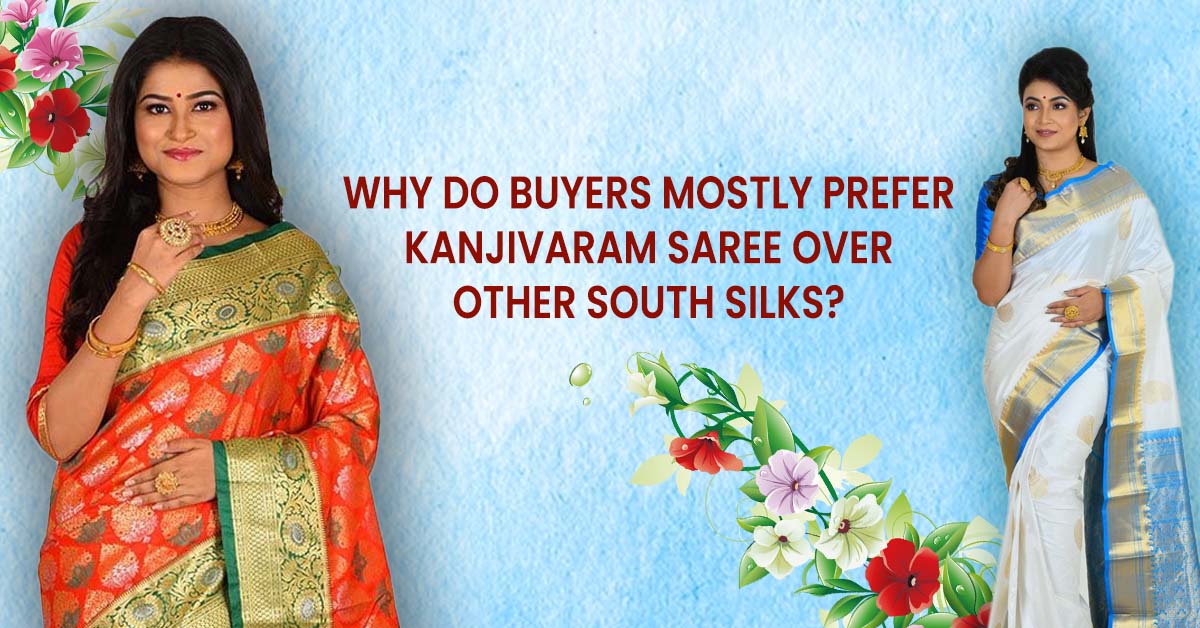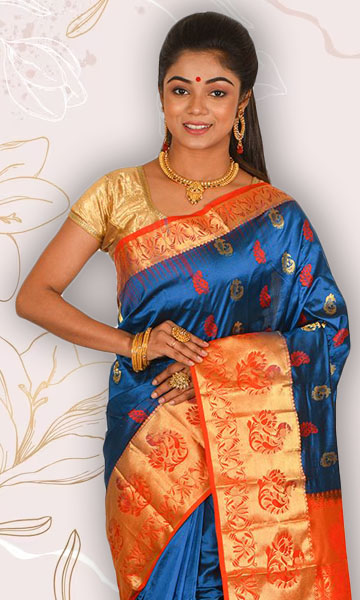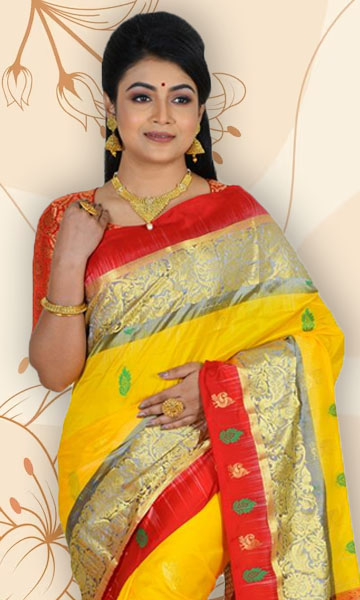
Why do buyers mostly prefer Kanjivaram saree over other South Silks?
Sarees have been an integral part of Indian culture for centuries. These elegant garments not only reflect the rich diversity of our country but also showcase the exquisite craftsmanship that has been passed down through generations. Among the numerous types of sarees available in India, Kanjivaram sarees stand out as a timeless and cherished choice for many buyers. In this blog post, we'll explore why buyers often prefer Kanjivaram sarees over other South Indian silk varieties.
The Legacy of Kanjivaram Sarees
Kanjivaram sarees, also known as Kanchipuram sarees, originate from the town of Kanchipuram in Tamil Nadu, India. These sarees are celebrated for their luxurious silk fabric and intricate designs, making them a symbol of opulence and tradition. The reasons behind the enduring popularity of Kanjivaram sarees are manifold:

Exceptional Craftsmanship: Kanjivaram sarees are handwoven by skilled artisans who have honed their craft over generations. The meticulous weaving process involves using pure mulberry silk threads and pure gold or silver zari, resulting in a saree that is not only visually stunning but also durable.
Intricate Designs: The sarees are known for their intricate motifs, inspired by nature, temples, and historical elements. These designs are often created using contrasting colors, which add depth and richness to the saree's overall appearance.
Durability: Kanjivaram sarees are revered for their durability. When cared for properly, they can last for generations, making them a prized heirloom piece.

Versatility: These sarees are incredibly versatile and suitable for various occasions. Whether it's a wedding, festival, or a formal event, Kanjivaram sarees never fail to make a statement.
Cultural Significance: Kanjivaram sarees have deep cultural roots and are often associated with auspicious occasions in South India. They are an essential part of a South Indian bride's trousseau and are worn with pride during important rituals.
Comparison with Other South Indian Silk Varieties
While South India boasts a wide range of silk sarees, including Mysore silk, Gadwal silk, and Uppada silk, Kanjivaram sarees continue to enjoy unparalleled popularity. Here's how they compare to other South Indian silk varieties:
Richness of Zari: Kanjivaram sarees are renowned for their opulent use of gold or silver zari, which sets them apart from other silk sarees. This lavish use of zari contributes to their grandeur and makes them highly sought after.
Distinctive Designs: The unique designs and motifs found in Kanjivaram sarees make them stand out from the crowd. While other South Indian silk sarees are beautiful in their own right, Kanjivaram sarees have a distinct and easily recognizable style.
Durability and Longevity: Kanjivaram sarees are often considered a long-term investment due to their durability. They can withstand the test of time better than many other silk sarees.
Traditional Appeal: The traditional appeal of Kanjivaram sarees makes them an evergreen choice for occasions that demand a touch of cultural authenticity.

Cultural Significance: The cultural significance associated with Kanjivaram sarees, especially in South Indian weddings and rituals, cements their place as an indispensable part of the region's heritage.
Conclusion
In a world where fashion trends come and go, Kanjivaram sarees have remained timeless. They embody the rich tapestry of Indian culture and craftsmanship. Their intricate designs, use of premium materials, and cultural significance make them a top choice for buyers seeking a piece of tradition and luxury in one package.
If you're in search of authentic and exquisite Kanjivaram sarees, one brand that stands out is "Adi Mohini Mohan Kanjilal." With a legacy spanning over a century, Adi Mohini Mohan Kanjilal offers a stunning collection of Kanjivaram sarees that showcase the true essence of South Indian craftsmanship and elegance. Choosing our sarees is not just a fashion statement; it's a celebration of heritage and artistry.
